Are you fascinated by the brilliantly colored dart frogs and wondering what do dart frogs eat in their natural habitat or as pets? These tiny, vibrant amphibians from the rainforests of Central and South America have specific dietary needs that help maintain their eye-catching colors and overall health. If you love to know what other baby animals eat, take a look at the following:
In this blog by What Do They, you will learn about the natural diet of dart frogs, how their feeding habits differ in captivity, and important nutritional considerations for these remarkable creatures.
The Natural Diet of Wild Dart Frogs
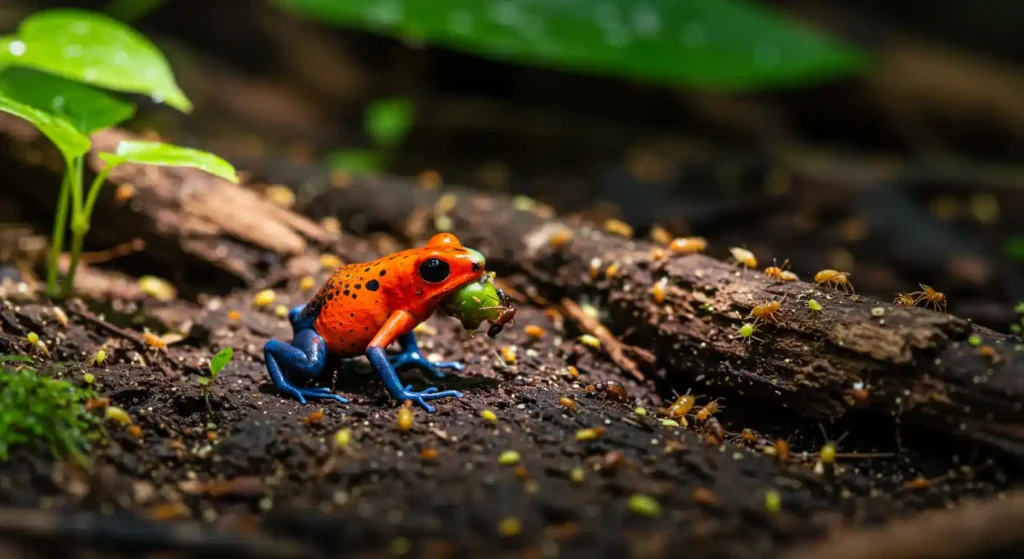
In their native rainforest habitats, what do dart frogs eat consists almost exclusively of small arthropods. These tiny hunters have evolved to consume a diverse array of tiny prey, including:
Primary Food Sources
- Ants (a staple food for many dart frog species)
- Termites
- Fruit flies
- Springtails
- Aphids
- Beetles (very small species)
- Mites
- Small spiders
- Insect larvae
- Millipedes (tiny species)
What’s particularly interesting about dart frogs is that they’re opportunistic predators that consume a tremendous variety of invertebrates. A single wild dart frog might eat dozens or even hundreds of tiny prey items daily, with some species showing preferences for specific insects like ants or mites.
Specialized Hunting Techniques
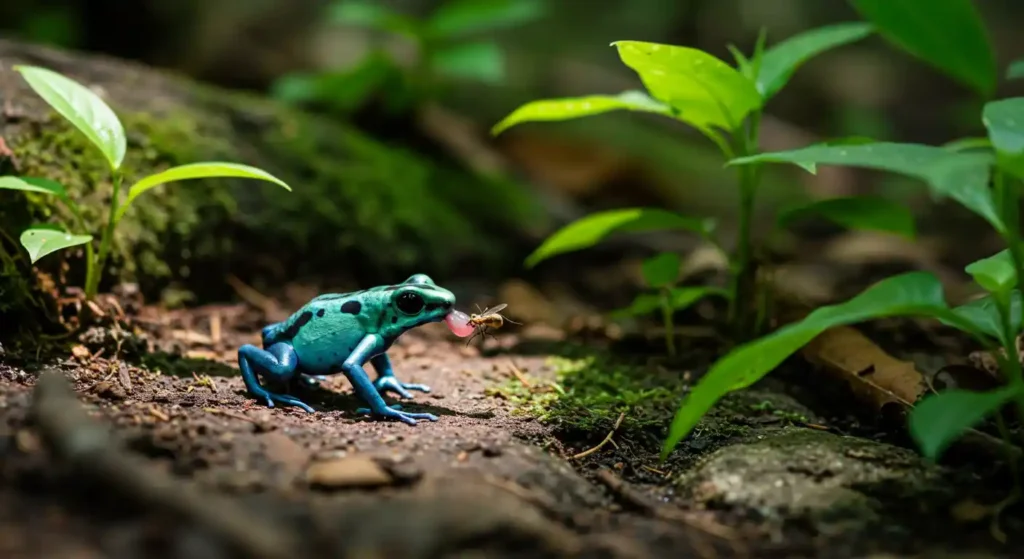
Understanding what do dart frogs eat requires appreciating their hunting methods. Dart frogs are active hunters that:
- Search the forest floor and low vegetation for movement
- Use their exceptional vision to spot tiny prey
- Strike quickly with their sticky tongues
- Can aim and project their tongues with remarkable accuracy
- Hunt primarily during daylight hours when they’re most active
Their brightly colored bodies, rather than helping them hide, actually serve as a warning to potential predators about their toxicity. This aposematic coloration allows them to hunt openly on the forest floor without significant threat from larger animals.
Diet and Toxicity Connection
Perhaps the most fascinating aspect of what do dart frogs eat relates to their famous toxicity. The poison that gives these frogs their name doesn’t come directly from their bodies but rather from their diet:
- Alkaloid compounds in certain prey insects (particularly ants and mites) are processed and concentrated in the frog’s skin
- The frogs cannot produce these toxins themselves—they must consume specific prey items
- Different dart frog species eating different insects develop varying levels of toxicity
- Captive-bred dart frogs fed on a standard terrarium diet lack the toxic compounds and are generally non-poisonous
This direct connection between diet and defense mechanism is one of the most remarkable adaptations in the amphibian world.
Feeding Dart Frogs in Captivity
For pet dart frogs, what do dart frogs eat changes significantly from their wild diet, though the basic concept remains the same—small arthropods appropriate for their size. Common food items include:
Primary Captive Diet
- Fruit flies (flightless varieties like Drosophila melanogaster and D. hydei)
- Springtails (crucial for young frogs and smaller species)
- Pinhead crickets (for larger dart frog species)
- Bean beetles
- Aphids
- Rice flour beetle larvae
- Isopods (tiny species)
Nutritional Supplementation
Because captive insects may not provide the same nutritional profile as wild prey, supplementation is essential:
- Calcium powder (dusted on prey items 2-3 times weekly)
- Vitamin and mineral supplements (including Vitamin A, D3, and E)
- Carotenoid supplements (may help maintain vibrant coloration)
Feeding Schedule and Amounts
What do dart frogs eat is closely tied to how and when they eat:
- Adult dart frogs typically need feeding every 1-2 days
- Juveniles require daily feeding, sometimes twice daily
- Each frog might consume 15-30 fruit flies per feeding
- Food should be dusted with supplements according to a regular schedule
Overfeeding can lead to obesity and related health issues, while underfeeding can cause nutritional deficiencies and weight loss.
Setting Up a Food Production System
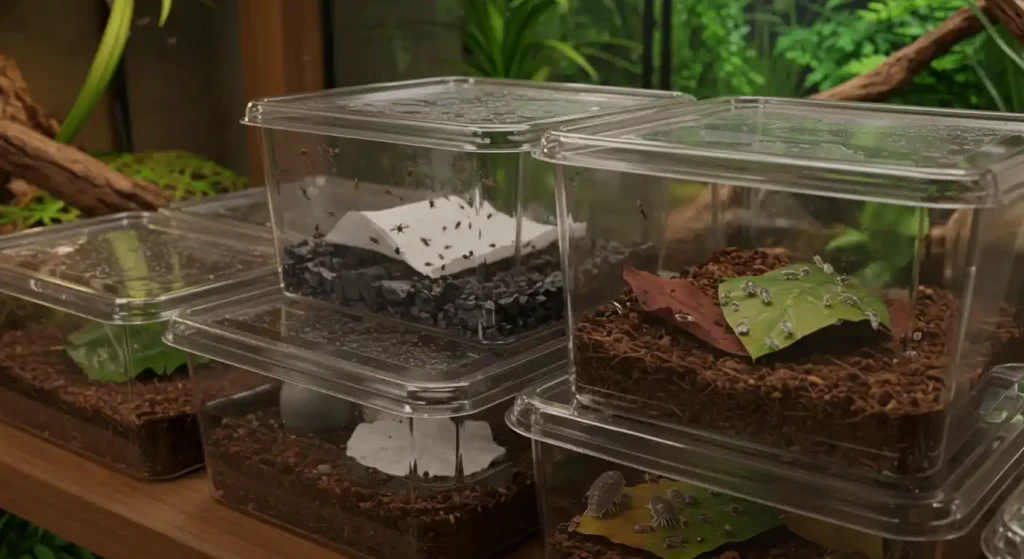
Most successful dart frog keepers maintain their own cultures of:
- Fruit flies (multiple cultures started at different times)
- Springtails (often grown in charcoal, leaf litter, or specialized media)
- Isopods (which can also serve as terrarium clean-up crew)
This self-sustaining food production system ensures a consistent supply of appropriately sized prey.
Age-Related Dietary Differences
What do dart frogs eat varies somewhat with age:
- Tadpoles: Primarily algae, microorganisms, and specialized tadpole foods
- Froglets (recently metamorphosed): Springtails and fruit fly larvae
- Juvenile frogs: Small fruit flies and springtails
- Adult frogs: Full-sized fruit flies, small crickets, and other appropriately sized insects
The transition from tadpole to frog represents a fundamental shift from an herbivorous/omnivorous diet to a strictly carnivorous one.
Common Feeding Challenges
When considering what do dart frogs eat, several challenges often arise:
- Ensuring prey items are the appropriate size (no larger than the width between the frog’s eyes)
- Maintaining consistent food cultures
- Providing proper supplementation without over-supplementing
- Creating a feeding area where frogs can easily find prey
- Preventing prey from hiding in substrate where frogs can’t find them
Experienced keepers often design terrariums with these challenges in mind, creating open areas where prey items are easily visible to the frogs.
Environmental Impact on Feeding
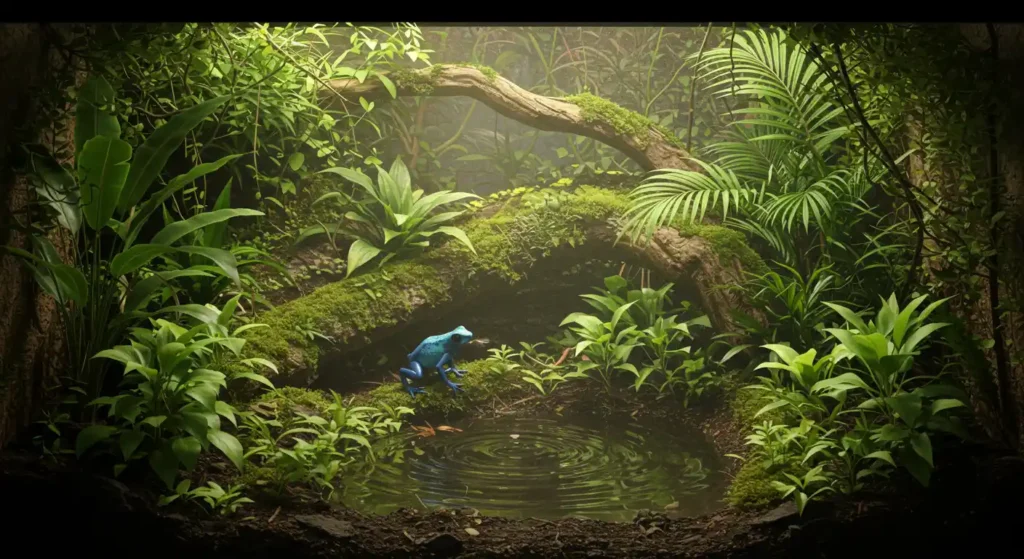
The terrarium environment significantly affects what do dart frogs eat and how they feed:
- Temperature: Proper temperature range (70-80°F) encourages active hunting
- Humidity: High humidity (80-100%) keeps frogs hydrated and active
- Lighting: Good lighting helps frogs spot prey items
- Vegetation: Plants provide hunting grounds and prey congregation areas
- Water features: Small pools offer hydration and increase overall humidity
A well-designed dart frog habitat encourages natural feeding behaviors and makes it easier for keepers to observe their frogs’ eating habits.
So the Answer to What do Dart Frogs Eat is…
Understanding what do dart frogs eat has important conservation implications. As rainforest habitats are destroyed or altered, the specific prey items that dart frogs rely on may disappear, threatening wild populations. This dietary specialization makes dart frogs particularly vulnerable to environmental changes. By learning about dart frog nutrition and supporting conservation efforts, we can help ensure these remarkable amphibians continue to thrive both in captivity and in their natural habitats. Whether you’re a dart frog keeper or simply an admirer of these colorful creatures, appreciating their unique dietary needs provides insight into their fascinating biology and ecological importance.

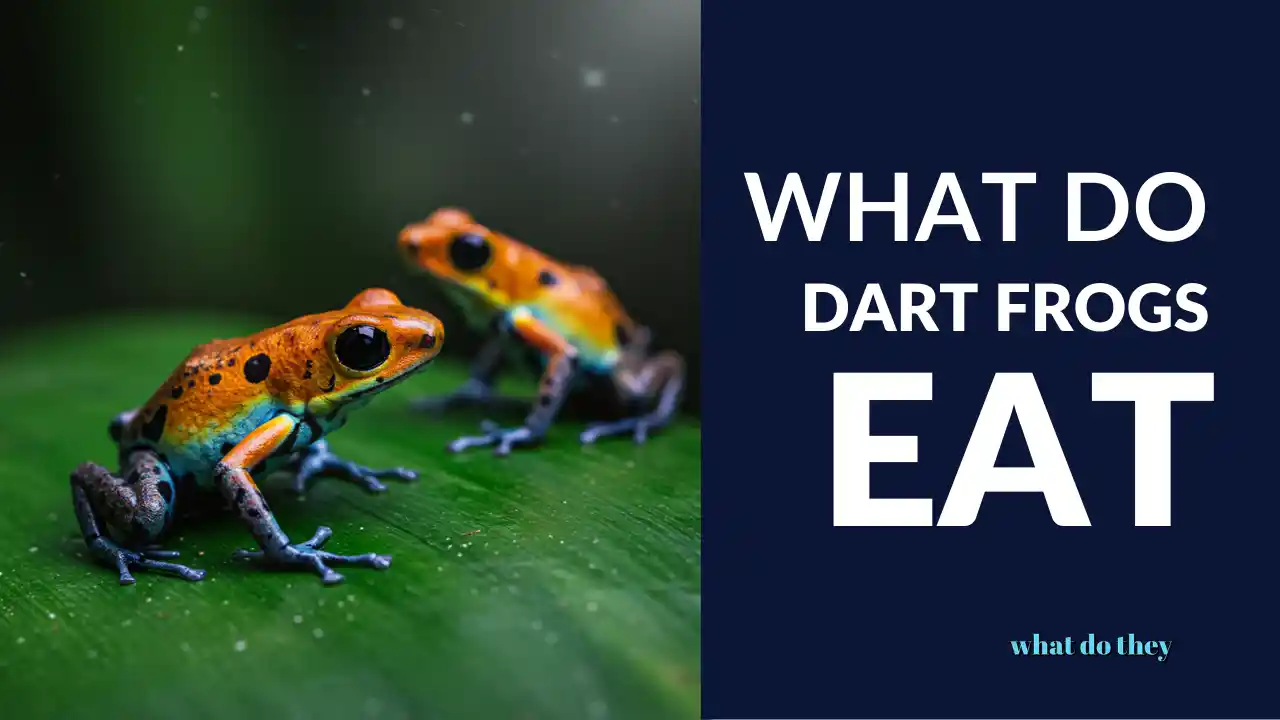



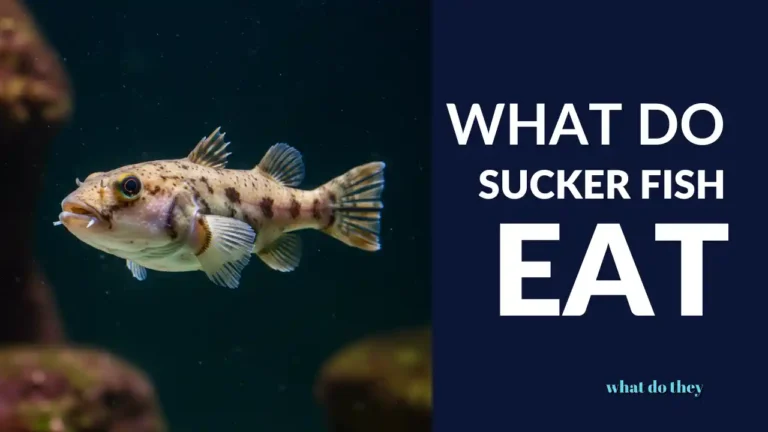
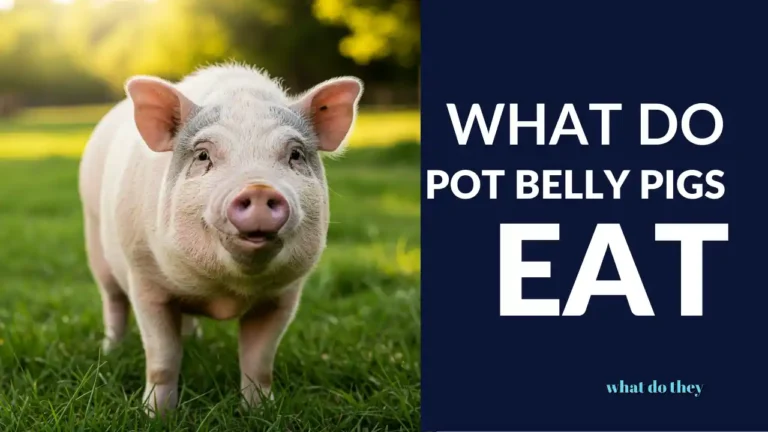
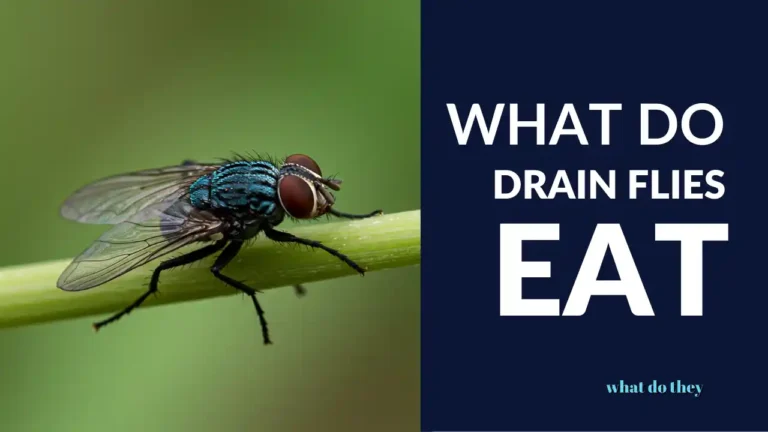
Leave a Comment